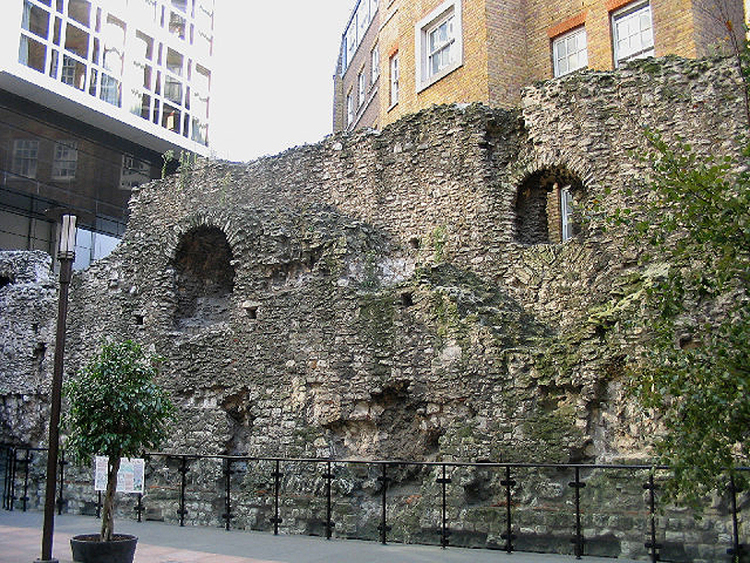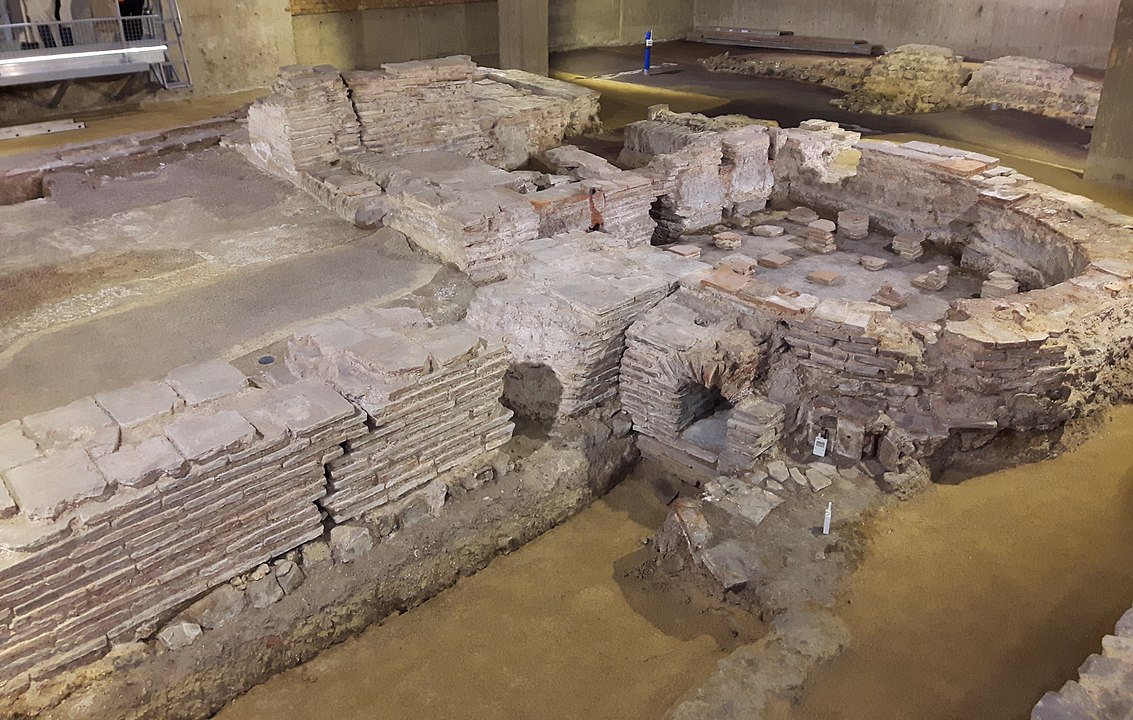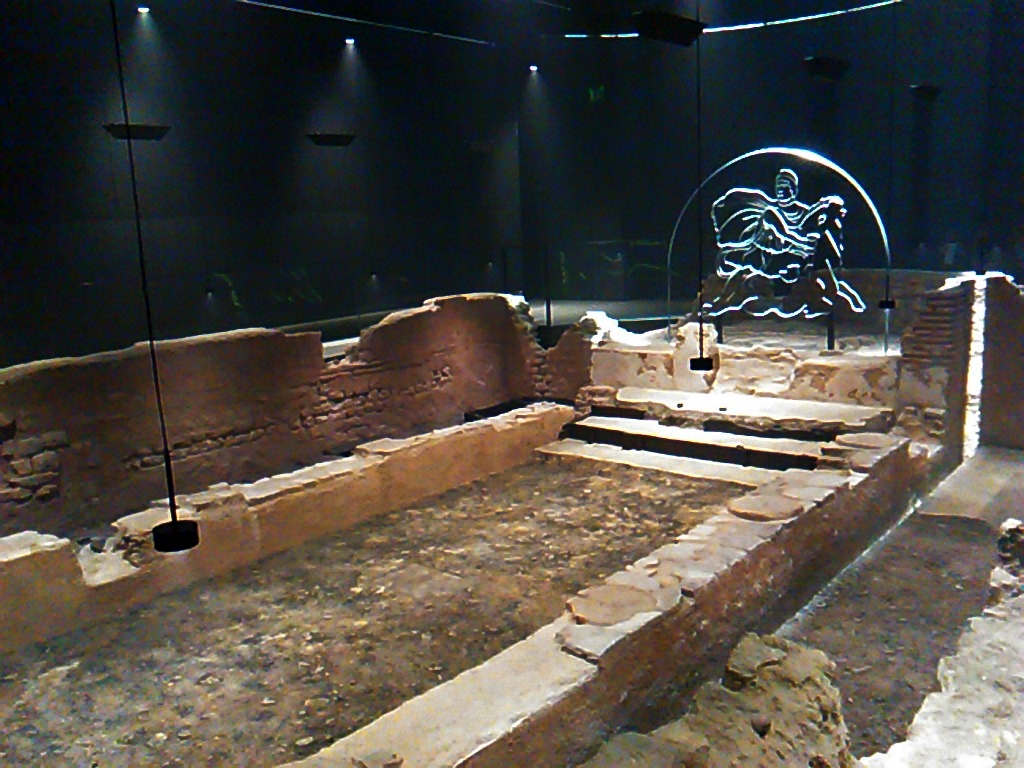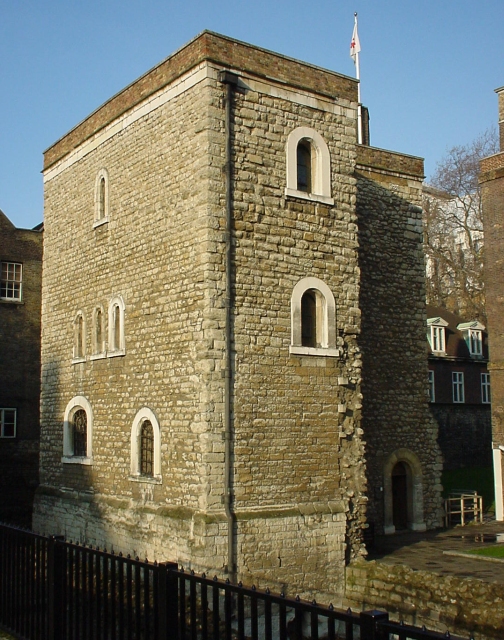The Top 10 Ruins To Visit In London
London’s skyline might look like the cover of a sci-fi novel, but it will not take you long to find the traces of its two-millennia-long urban history. The bustling capital of Roman Britannia lost much of its lustre in the Dark Ages, but it still attracted the attention of the Vikings and the Normans after them. You can still find them all on the city streets – Romans, Saxons, Vikings and the English of the early Plantagenet era. You just have to know where to look.
1. The Roman Amphitheatre: Echoes of Gladiators
Buried beneath the bustling Guildhall in the heart of the City of London lies the Roman Amphitheatre, a site that has been forgotten for centuries. Discovered only in 1988 during redevelopment work, this ancient arena once held up to 7,000 spectators who gathered to watch gladiators fight for glory.
The remains of the amphitheatre’s stone walls and timber seating outline what was once the stage for bloody contests and Roman sports. As you wander through the exposed foundations, you can almost hear the roars of the crowd and feel the tension in the air as gladiators prepared for battle. Today, the amphitheatre has been cleverly incorporated into the Guildhall Art Gallery, allowing visitors to experience this hidden slice of Roman Britain while admiring fine art.
2. The Wall of Londinium: Roman Fortifications
The Wall of Londinium is one of the city’s most enduring remnants of its Roman past. Erected around 200 AD, the wall stretched for over three miles, encircling the Roman town of Londinium and offering protection from Saxon raiders. Much of it has since crumbled or been built over, but fragments can still be seen in several locations around the city.
One of the best-preserved sections can be found near Tower Hill, where you’ll spot the imposing stonework peeking through the modern cityscape. Walking along the ruins gives you a sense of the fortifications’ original grandeur, and it’s easy to imagine Roman soldiers pacing along its length, standing guard over a bustling Londinium.

3. Billingsgate Roman House & Baths: Life in Ancient London
Tucked away beneath the bustling streets of modern-day London lies the Billingsgate Roman House & Baths. This archaeological treasure offers a fascinating glimpse into domestic life in Roman Britain. Discovered in the 19th century during building work, this well-preserved site includes the foundations of a Roman house and its accompanying bathhouse.
The bathhouse was a central part of Roman social life, and the Billingsgate site provides a detailed look at how Roman Londoners enjoyed their leisure time. Visitors can walk around the remnants of heated floors, plunge pools, and steam rooms, all beautifully preserved. While relatively small, the site offers a window into the everyday luxuries enjoyed by wealthy Romans nearly two thousand years ago.

4. Spitalfields Charnel House: A Forgotten Burial Ground
Located in the heart of the East End, Spitalfields Charnel House is one of London’s more eerie ruins. This 14th-century burial vault was part of the mediaeval priory of St Mary Spital and served as a resting place for hundreds of human remains. In case you’re wondering, a charnel house was used to store bones when a cemetery became overcrowded.
Long forgotten, the Spitalfields Charnel House was rediscovered in the late 1990s during a development project. Today, visitors can explore this haunting site, where the stone walls still exude a faint chill. Though its origins were purely practical, it’s hard not to feel the weight of history when standing among the remains of London’s mediaeval past.
5. The London Mithraeum: A Secret Roman Temple
Deep beneath the towering skyscrapers of the City of London lies the London Mithraeum, a hidden gem that once served as a temple to the god Mithras. Originally built in the 3rd century AD, this subterranean temple was used for secret rituals by followers of the Mithraic cult, a mysterious religion popular among Roman soldiers.
The Mithraeum was discovered in 1954 during excavation work and has since been meticulously reconstructed. Visitors can now descend into the depths of the Bloomberg building to experience a hauntingly atmospheric recreation of the ancient temple, complete with projections and soundscapes that bring the rituals of the past to life. It’s a fascinating reminder of the strange and diverse religious practices that once flourished in Roman London.

6. WELL Tower: London’s Hidden Norman Fortress
Tucked away in an unassuming corner of central London stands the WELL Tower, a hidden fragment of Norman architecture that’s easy to overlook but impossible to forget once you’ve spotted it. Built shortly after the Norman Conquest in the late 11th century, the WELL Tower is all that remains of a much larger complex that once formed part of London’s defensive walls.
Although its surrounding structures have long since disappeared, the WELL Tower offers a rare glimpse into London’s Norman past. Its weathered stone walls and narrow windows speak of a time when the Normans ruled with an iron grip, fortifying their control over the newly conquered city. The tower is a must-see for anyone interested in the Norman influence on London’s development.
7. Winchester Palace: Mediaeval Grandeur
Once one of the grandest buildings in London, Winchester Palace was the London residence of the powerful Bishops of Winchester during the Middle Ages. Built in the 12th century, it was a lavish complex with a great hall, cloisters, and even a riverside garden. Today, all that remains of this once-magnificent structure is the western wall of the great hall, which stands as a lonely monument to the past.
The most striking feature of the ruins is the large rose window, which still bears the intricate stone tracery of its original design. Standing before this weathered relic, you can easily imagine the grandeur of Winchester Palace in its heyday. The ruins are a poignant reminder of London’s mediaeval history, now quietly nestled among the city’s bustling streets.
8. St. Alphage Church: A Forgotten London Parish
Hidden in plain sight, the ruins of St. Alphage Church are easy to miss as you wander through the Barbican area. Once a thriving parish church, St. Alphage’s origins date back to the 11th century, although the current ruins date from the 14th century. The church was largely destroyed during the dissolution of the monasteries in the 16th century, and only fragments of the walls and a few archways remain today.
Despite its ruined state, St. Alphage is a peaceful spot to pause and reflect on London’s religious history. The remains of the church are surrounded by modern office buildings, making it a curious juxtaposition of old and new, where the past quietly endures amid the city’s constant transformation.
9. Jewel Tower: A Survivor of Westminster’s Past
Standing just across the road from the Houses of Parliament, the Jewel Tower is one of the few surviving remnants of the mediaeval Palace of Westminster. Built in the 1360s, the tower was initially constructed to house the royal treasures of Edward III and served as a secure storehouse for the king’s valuables.
Over the centuries, the Jewel Tower has had many uses, from a storage facility for parliamentary records to a testing site for official weights and measures. Today, it’s open to visitors, offering a rare chance to explore a mediaeval structure that has witnessed the rise and fall of dynasties, the execution of kings, and the birth of modern British politics.
10. Sutton Hoo: Saxon Secrets in the British Museum
Though not a ruin in the traditional sense, Sutton Hoo represents one of the most extraordinary archaeological finds in British history. Located at the British Museum, this exhibit features treasures from Suffolk’s famous Anglo-Saxon burial site. Discovered in 1939, Sutton Hoo is best known for its ship burial, which included a wealth of artefacts thought to belong to a 7th-century Anglo-Saxon king.
The collection’s highlight is the iconic Sutton Hoo helmet, an intricately decorated piece that has become one of the most recognisable symbols of Anglo-Saxon England. While the ruins of the actual burial site are in Suffolk, the British Museum’s display offers a fascinating insight into the world of the early Anglo-Saxons and their elaborate funerary customs.
London wears its history on its sleeve, yet many of its most fascinating stories lie hidden beneath the surface. From Roman amphitheatres and temples to Norman fortresses and mediaeval palaces, these ruins offer a captivating glimpse into the past, revealing the layers of history that make London such a rich and complex city to explore. Whether you’re a history buff or simply curious about the city’s hidden corners, these ancient sites are well worth a visit.



